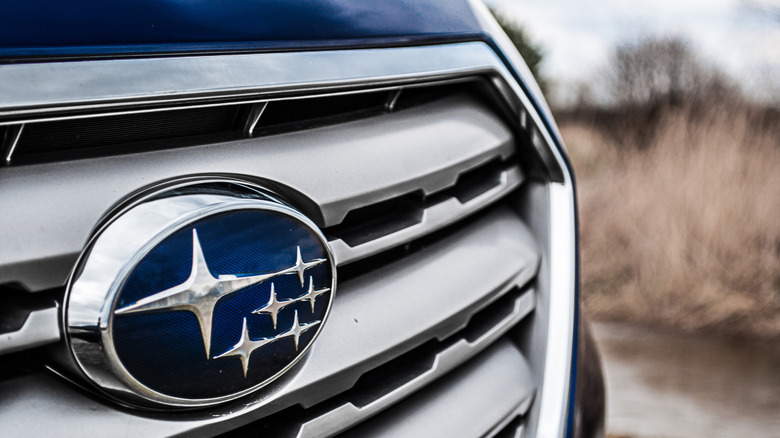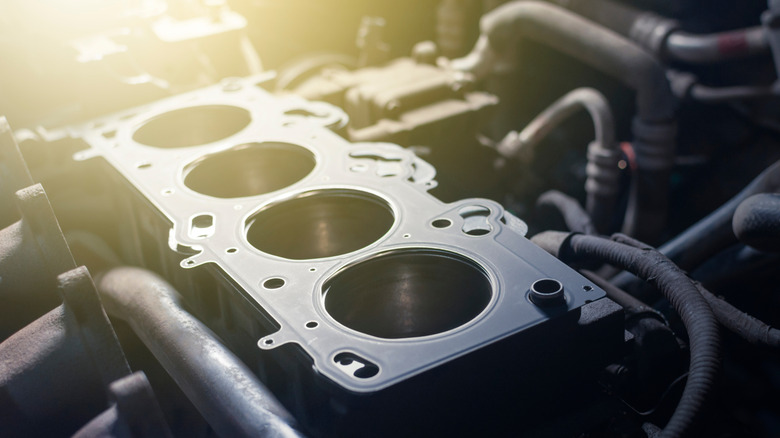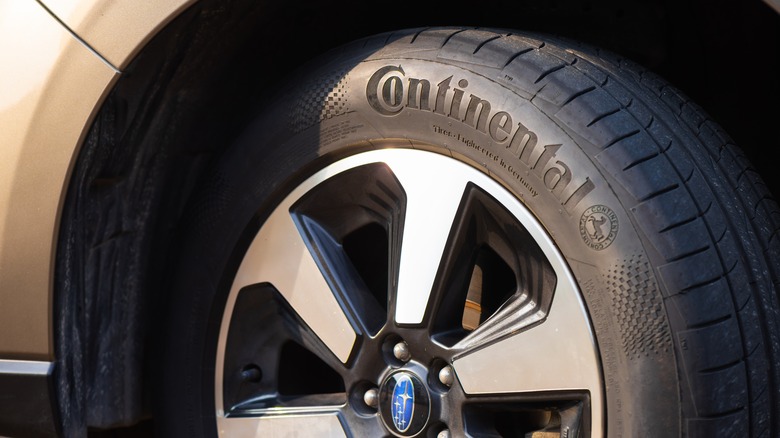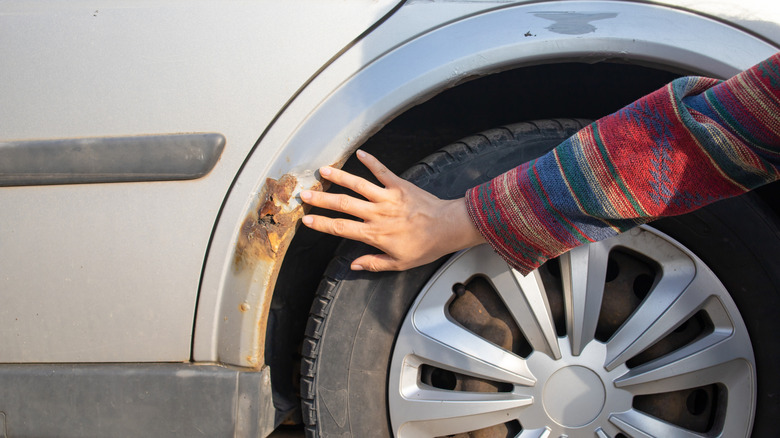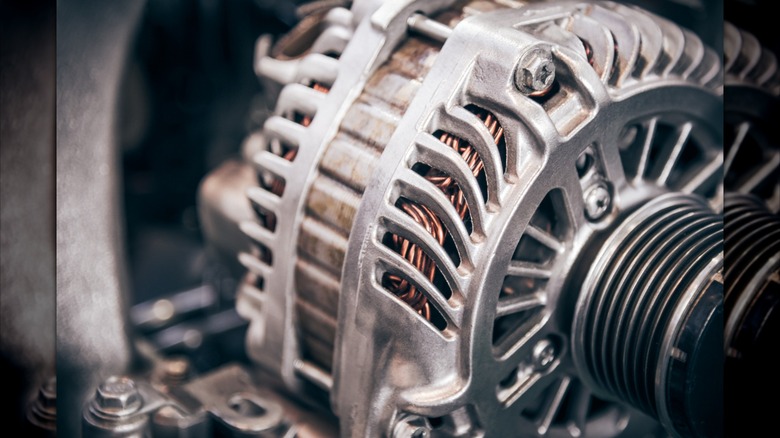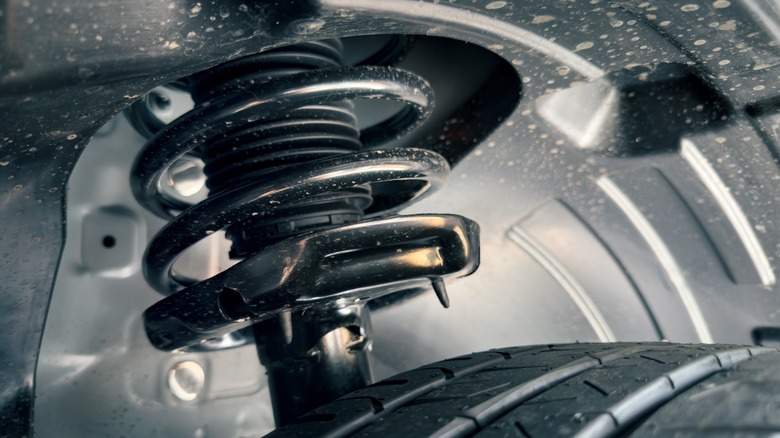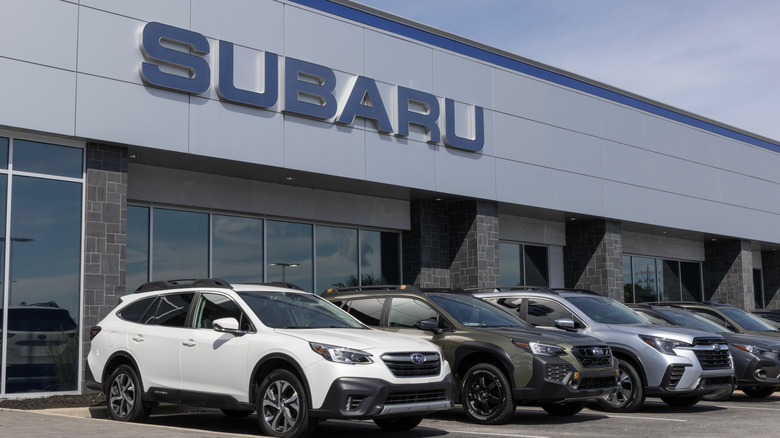5 Things To Check Before Buying A Used Subaru
Getting a used car is a big task, as there are several things that you must check before finalizing a purchase. Plus, the new and used car markets aren't getting cheaper either. According to Kelly Blue Book, the average used car price reached $25,527 in July, which is $185 higher than the previous month. The supply of used cars across the U.S. has also dipped in the past few years, especially after COVID. A fresh report by Edmunds suggests that now you have to pay an inflated price of $30,000 for a 3-year-old used car, the highest since 2023, also indicating the gap between new and used cars is shrinking.
Edmunds further reported that $20,000 new cars have almost disappeared, with brands now setting $25,000 as the new baseline. Subaru, in particular, is quite popular in the used car market for its reliability, safety ratings, loyal customer base, and fuel efficiency, among other factors. There are several models that you can pick if you want a used Subaru, but this shouldn't be done before conducting a thorough check. Similar to other car brands, Subarus are also prone to several known issues that aren't limited to a particular model.
To make things easier for you, we have compiled a list of things that you should check before buying a used Subaru. Though not exhaustive, this guide will give you an idea of what to look for in a Subaru when shopping in the used car market and help you avoid making a hasty decision.
Head gasket leaks and timing belt issues
Engine problems in old cars are acceptable; however, a head gasket issue is one of the most commonly reported and serious issues for old Subaru models, especially with the EJ series engine. And this is quite hard to spot without getting into the engine. Thankfully, you don't need to open up the hood, as there are a few cues that will tell you that the used Subaru that you are looking for suffers from a head gasket issue. These include white smoke from the exhaust, overheating, and oil contamination in the coolant. Why is a worn or blown-out head gasket a serious issue? Because it can cause oil and coolant to mix, loss of power, or lead to bubbles in the coolant tank, resulting in expensive repairs.
Another problem that you should look out for in a used Subaru is with the timing belt. While not all Subarus come with a timing belt, rather they come with a timing chain, some models produced between the 1990s and early 2000s do. A faulty timing belt can cause engine damage, the repair of which could cost you thousands of dollars. There are fewer chances of timing belt issues if the car has been properly serviced, as they require replacement after every 60,000 miles.
If you do not know a thing or two about head gaskets or timing belts, it is recommended that you get the car checked by a professional to keep yourself from buying problematic machine.
Check mileage, tires, and warning lights
Subaru is known to produce high-mileage cars that last long. Whichever model you pick, a Subaru can typically get past 200,000 miles, provided that the vehicle has gone through regular servicing. However, mileage doesn't always depend on the model but largely on the driving habits of the user. For instance, a Subaru Outback –- often chosen for long commutes and outdoor trips -– might show high mileage, while a Subaru Impreza –- commonly used as a city car -– could have logged less mileage. Depending on the driver's needs, the mileage may vary. However, if the odometer appears excessively high, and it doesn't align with the overall condition of the car, exercise caution.
Another check that you can perform to get a good idea about the car's original condition is to look at the tires. Inspect all four wheels along with the spare (if available) for signs of damage. Look closely at the tires; if you see more damage than some scratches, then it is surely more used than what the odometer is saying. Besides, you should look for tire damage. If the tires are rough, have signs of wear and tear, or have recently been changed, then take a look at the bill of tire replacement to get a good idea of the condition.
Also, turn on the ignition and check for any warning lights, and cross-check with what the seller says about the car's mileage. You can also take a look at the service record, and if there are any discrepancies, then you should take a step back from that used Subaru.
Check for rust and corrosion
Rust and corrosion are very common issues with used Subaru models. Several Subaru owners on Reddit and forums have complained about rust formation. Weather can play a vital role in rust formation, as cars that are more exposed to snow, mud, and salt tend to get rusty quickly. Besides, rust can accumulate on different parts of your vehicle, especially under the car, in the area of the wheel wells. Rust not only damages the car but also reduces its value and could also make the car unusable if not treated in time.
In a used Subaru, look for hints of rust underneath the wheel arches, on the body parts, around the doors, the rear hatch, etc. It should be noted that surface rust can be easily treated and fixed, but deep corrosion can weaken the frame, suspension, and brakes, leading to costly repairs. Also, such vehicles are not safe to ride as they can lead to any type of mishap. There are several ways to protect a car from rust. So, if the used Subaru you are looking at has undercoatings, properly maintained and washed, has a wax coating, etc., it's a good sign that the previous owner has taken good care of the vehicle.
CVT transmission and turbocharger issues
Some Subaru models, such as the Outback and Forester, are prone to transmission failures. You will notice jerky acceleration, weird engine noise, and transmission fluid leaks, all indicating a CVT transmission issue. Notably, the issue can be found on old Subaru models with both automatic and manual transmissions. Common signs that will tell you that a Subaru suffers from a transmission issue include the car not moving even after pressing the gas pedal, a clunky sound when gear shifting, jerky gear changes, transmission fluid producing a foul smell, or it having gone dark. If you notice such issues, it's better to get the car checked by an expert so that they can evaluate if the problem is worth fixing or not. The transmission problem also exposes the fact that the car wasn't properly maintained, and there can be many more underlying issues.
Additionally, the Subaru models such as the WRX, Forester XT, and some Legacy and Outback trims, are known to suffer from turbocharger issues. Since the turbocharger heavily relies on a constant flow of necessary oils, oil leakage or not changing the oil frequently can cause turbocharger problems. On the other hand, some Subaru turbo engines are known to burn excessive oil, leading to its quick consumption and engine seizure. It can also lead to bearing and shaft wear, overheating, etc., thus making a thorough check important on used Subaru models.
Check for suspension issues
Since Subarus are known for their reliability, having them for long years shouldn't be a problem with regular maintenance. However, machine parts tend to wear and tear with time, especially the suspension and wheel bearings. It is quite noticeable, especially when driving, that you will see a jerky ride, decreased ride quality, and suspension noise when going over bumps. If you experience a front rattle while trying out a used Subaru, then you should get the car thoroughly checked, as it might be suffering from a suspension issue.
Among other common signs that will help you understand a suspension issue is a squeaking sound that could be due to the ball joints, shocks, springs, or struts. Moreover, your car will nosedive when you apply the brakes. A car with perfect suspension will remain balanced. Additionally, check if your car leans towards one corner, as this indicates a suspension issue. A car with a good suspension will remain perfectly level on all four wheels. You can also take a look at the uneven tire wear, as that could indicate an issue with your car's suspension components.
Methodology
To come up with this guide, we looked at the history of popular Subaru models, their most common problems, and issues reported by owners. Then we conducted research and included information from dealership blogs, car review websites, customer reports, and discussion threads on Reddit. Each slide was created after cross-referencing multiple sources, ensuring that the issues listed here are both critical and frequent. This approach gives up-to-date information to customers looking to buy a used Subaru.
